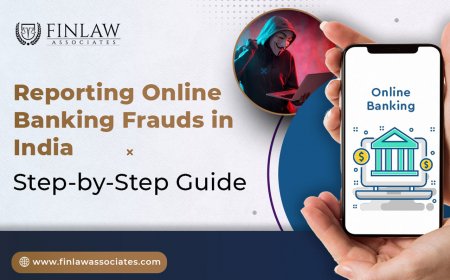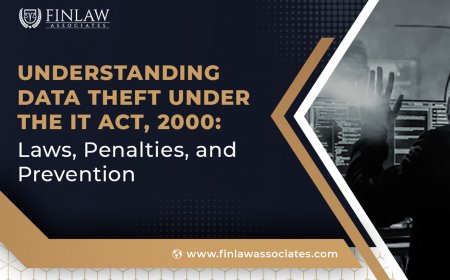Laws Against Harassment and Bullying on Social Media in India
Learn about laws against harassment and bullying on social media in India, legal remedies, and steps victims can take for protection.

In today’s digital era, social media has transformed the way people communicate, share information, and engage with the world. Platforms like Facebook, Instagram, Twitter, WhatsApp, and LinkedIn connect millions daily, but they have also become breeding grounds for harassment and bullying. From cyberstalking to doxxing, online defamation, and trolling, these harmful activities can have severe psychological, emotional, and reputational consequences. In India, where internet usage has crossed 1.2 billion users in 2025, addressing harassment and bullying on social media has become a pressing legal and social concern.
This article explores the legal framework governing online harassment in India, notable case studies, and practical steps victims can take to seek justice. It also highlights the role of social media platforms, law enforcement, and public awareness in curbing these threats.
Understanding Harassment and Bullying on Social Media
Harassment and bullying on social media involve using digital platforms to intimidate, threaten, or harm individuals. Some common forms include:
-
Cyberbullying: Repeatedly targeting someone with abusive messages, rumors, or threats.
-
Cyberstalking: Persistent and unwanted online attention that causes fear or distress.
-
Doxxing: Sharing private or sensitive information without consent to harm or intimidate.
-
Sextortion: Threatening to release private images unless demands are met.
-
Trolling: Posting inflammatory content to provoke or humiliate someone publicly.
Impact on Individuals
Studies indicate that victims of online harassment may experience anxiety, depression, low self-esteem, and in extreme cases, suicidal thoughts. Children and teenagers are particularly vulnerable. In India, the National Crime Records Bureau (NCRB) has recorded a steady increase in cybercrime cases, highlighting the urgent need for robust legal safeguards.
Legal Provisions Addressing Harassment and Bullying on Social Media in India
India has developed a multi-layered legal framework to tackle online harassment. These laws include both cyber-specific and traditional criminal statutes.
1. The Information Technology Act, 2000 (IT Act)
The IT Act criminalizes various forms of online misconduct:
-
Section 66E: Punishes capturing, publishing, or transmitting private images without consent.
-
Section 66F: Addresses cyber terrorism, including acts threatening India’s sovereignty or integrity.
-
Section 67: Criminalizes publishing or transmitting obscene material electronically.
-
Section 67A: Targets sexually explicit content online.
-
Section 67B: Covers the publication or transmission of material depicting children in sexually explicit acts.
Pro Tip: Victims should report offenses under the IT Act promptly to enhance chances of investigation and removal of content from social media platforms.
2. The Indian Penal Code, 1860 (IPC)
The IPC complements the IT Act in addressing online harassment:
-
Section 354D: Criminalizes stalking, including cyberstalking.
-
Section 499/500: Applies to defamation that harms an individual’s reputation online.
-
Section 507: Criminal intimidation through anonymous communication.
-
Section 509: Insults the modesty of a woman through verbal, written, or online means.
3. Protection of Children from Sexual Offences (POCSO) Act, 2012
The POCSO Act ensures strict penalties for online sexual harassment involving minors. This includes sexual messages, images, or videos targeting children.
4. Digital Personal Data Protection Act, 2023
This Act safeguards personal data, ensuring that misuse of personal information on social media constitutes a punishable offense. It indirectly addresses harassment by giving individuals legal recourse against platforms or users who misuse their data.
Recent Legal Developments
1. Bombay High Court Orders Social Media Content Removal
The Bombay High Court directed platforms such as Google and Facebook to remove posts labeling a jewelry brand as a “Pakistan sympathizer” after an influencer of Pakistani origin was associated with it. This illustrates the judiciary’s proactive stance in protecting individuals and brands from online harassment.
Read more
2. FIR Filed Over Inflammatory Social Media Comments
Authorities in Ahmedabad registered an FIR against a user for posting inflammatory Instagram comments that could incite communal tensions. This demonstrates law enforcement’s vigilance in monitoring harmful online content.
Read more
3. Karnataka High Court Upholds Government Takedown Powers
The Karnataka High Court approved the Sahyog portal, allowing police and authorized agencies to request the removal of harmful online content without prior judicial oversight. While it raises debates around free speech, it strengthens mechanisms to curb harassment and bullying on social media.
Read more
Steps for Victims of Online Harassment and Bullying
If you are facing harassment or bullying on social media, follow these steps:
-
Document Evidence: Take screenshots, save URLs, and preserve any abusive messages.
-
Report to the Platform: Use reporting mechanisms on Facebook, Instagram, or WhatsApp.
-
File an FIR: Approach your local police station to file a complaint.
-
Seek Legal Counsel: Engage a lawyer specializing in cyber law.
-
Approach Support Organizations: Organizations such as the CyberPeace Foundation and Digital Empowerment Foundation provide guidance and assistance to victims.
Role of Social Media Platforms
Social media companies have a responsibility to monitor content and respond to complaints. Many platforms provide dedicated tools to report harassment, bullying, or hate speech. Features like content takedown requests, user blocking, and reporting abusive messages are crucial for victim protection.
Raising Awareness and Prevention
Combating harassment and bullying on social media requires a combined effort from individuals, platforms, and authorities. Awareness campaigns in schools, workplaces, and communities can educate users about:
-
Safe online practices
-
Privacy settings management
-
How to report abuse effectively
Promoting digital literacy helps prevent harassment and empowers users to act responsibly online.
Conclusion
Harassment and bullying on social media are serious issues affecting millions in India. The combination of the IT Act, IPC, POCSO Act, and the Digital Personal Data Protection Act offers a strong legal framework for protection and justice. Recent judicial interventions demonstrate proactive measures against online harassment, while social media platforms and awareness campaigns play a critical role in prevention. As technology evolves, continuous legal updates and public education are essential to creating a safer digital environment for everyone.
By understanding the laws and knowing the steps to take, victims can assert their rights and reduce the impact of online harassment on their lives.
What's Your Reaction?















